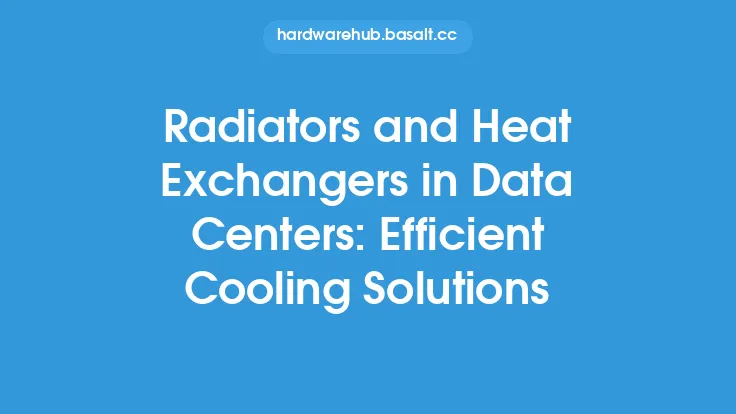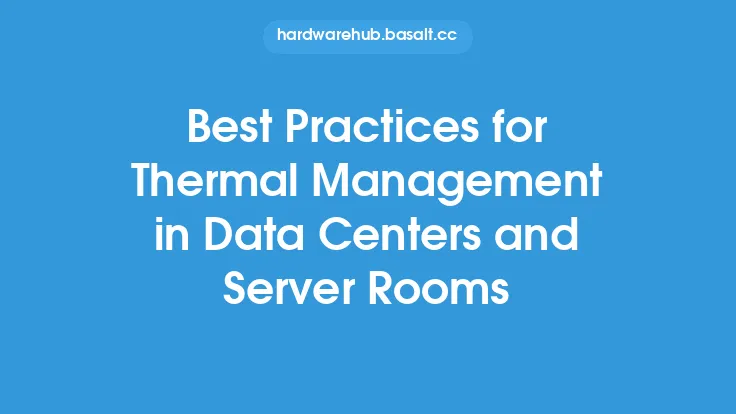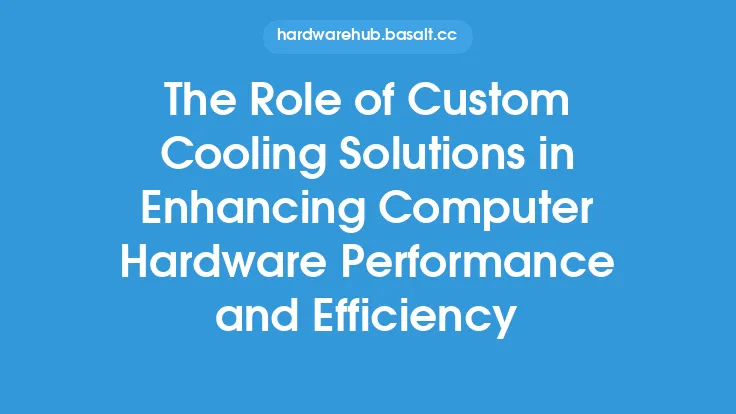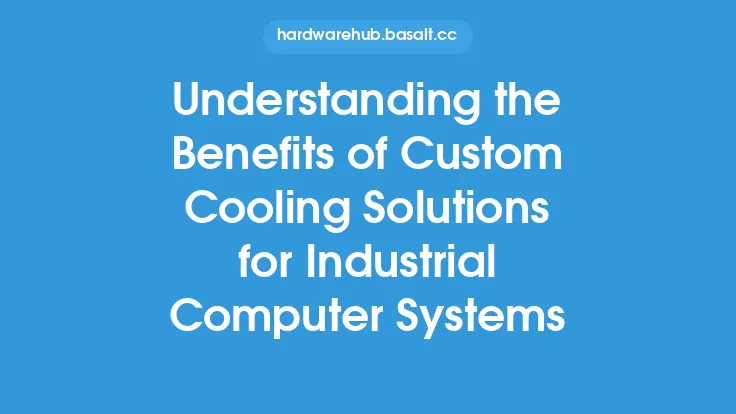When it comes to home servers and data centers, noise reduction is a critical aspect to consider. The constant hum of fans and whirring of machinery can be distracting and even disruptive, especially in residential areas. Moreover, excessive noise can also lead to increased stress and decreased productivity. To mitigate this issue, custom cooling solutions can be designed and implemented to minimize noise levels while maintaining optimal cooling performance. In this article, we will delve into the world of custom cooling solutions for noise reduction in home servers and data centers, exploring the various techniques, technologies, and strategies employed to achieve a quieter and more efficient cooling system.
Introduction to Noise Reduction in Cooling Systems
Noise reduction in cooling systems is a complex challenge that requires a deep understanding of the underlying physics and mechanics. The primary sources of noise in cooling systems are the fans, pumps, and other mechanical components that generate vibrations and acoustic emissions. To reduce noise levels, custom cooling solutions often employ advanced materials, designs, and technologies that minimize these sources of noise. For instance, using fans with optimized blade designs, implementing noise-reducing materials such as sound-absorbing foams, and utilizing vibration-dampening mounts can all contribute to a quieter cooling system.
Custom Cooling Solutions for Home Servers
Home servers, being smaller and more compact than data centers, require customized cooling solutions that are tailored to their specific needs. One approach is to use fanless or low-noise fans that are designed to operate at lower speeds, resulting in reduced noise levels. Another strategy is to employ liquid cooling systems, which use a liquid coolant to absorb heat from the server components and transfer it to a radiator, where it is dissipated. Liquid cooling systems can be highly effective in reducing noise levels, as they eliminate the need for fans and other mechanical components. Additionally, custom cooling solutions for home servers can also involve the use of heat pipes, which are highly efficient at transferring heat and can be designed to operate with minimal noise.
Custom Cooling Solutions for Data Centers
Data centers, on the other hand, require more complex and sophisticated custom cooling solutions due to their larger scale and higher heat densities. One approach is to use advanced air cooling systems, such as those that employ air-side economizers or evaporative cooling systems. These systems can be designed to operate at higher efficiencies and lower noise levels than traditional air cooling systems. Another strategy is to use liquid cooling systems, such as those that employ chillers or cooling towers, which can be highly effective in reducing noise levels and improving cooling efficiency. Custom cooling solutions for data centers can also involve the use of advanced materials and technologies, such as nanomaterials or phase-change materials, which can enhance heat transfer and reduce noise levels.
Design Considerations for Custom Cooling Solutions
When designing custom cooling solutions for noise reduction, there are several key considerations to keep in mind. First and foremost, it is essential to understand the specific cooling requirements of the home server or data center, including the heat loads, airflow rates, and temperature ranges. This information can be used to select the most suitable cooling technologies and materials, and to optimize the design for maximum efficiency and minimal noise. Another critical consideration is the acoustic performance of the cooling system, which can be evaluated using metrics such as sound pressure levels, noise spectra, and acoustic power. By carefully considering these factors, custom cooling solutions can be designed to meet the specific noise reduction requirements of home servers and data centers.
Implementation and Testing of Custom Cooling Solutions
Once a custom cooling solution has been designed, it must be implemented and tested to ensure that it meets the required noise reduction and cooling performance specifications. This can involve a range of activities, including prototyping, simulation, and experimental testing. Prototyping involves building a physical model of the custom cooling solution, which can be used to evaluate its performance and identify areas for improvement. Simulation involves using computational models and algorithms to predict the performance of the custom cooling solution, which can be used to optimize the design and reduce the need for physical prototyping. Experimental testing involves measuring the actual performance of the custom cooling solution, including its noise levels, cooling efficiency, and reliability. By carefully implementing and testing custom cooling solutions, it is possible to ensure that they meet the required specifications and provide reliable and efficient cooling performance.
Maintenance and Upgrades of Custom Cooling Solutions
Finally, it is essential to consider the maintenance and upgrade requirements of custom cooling solutions. Over time, cooling systems can become less efficient and more noisy due to wear and tear, dust buildup, and other factors. To maintain optimal performance, it is essential to regularly clean and inspect the cooling system, replace worn or damaged components, and upgrade the system as needed. This can involve replacing fans or pumps, cleaning or replacing heat exchangers, and upgrading the control systems or software. By properly maintaining and upgrading custom cooling solutions, it is possible to ensure that they continue to provide reliable and efficient cooling performance over their entire lifespan.
Conclusion
In conclusion, custom cooling solutions can play a critical role in reducing noise levels in home servers and data centers. By employing advanced materials, designs, and technologies, it is possible to minimize the sources of noise and create quieter and more efficient cooling systems. Whether it is a home server or a large data center, custom cooling solutions can be tailored to meet the specific needs and requirements of the application. By carefully considering the design, implementation, and testing of custom cooling solutions, it is possible to ensure that they provide reliable and efficient cooling performance while minimizing noise levels. As the demand for quieter and more efficient cooling systems continues to grow, custom cooling solutions will play an increasingly important role in meeting this need.





